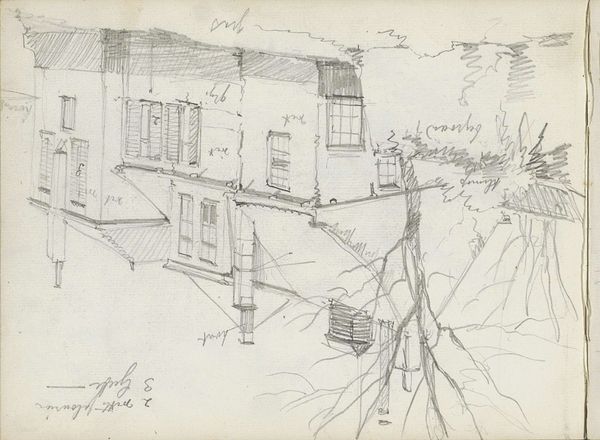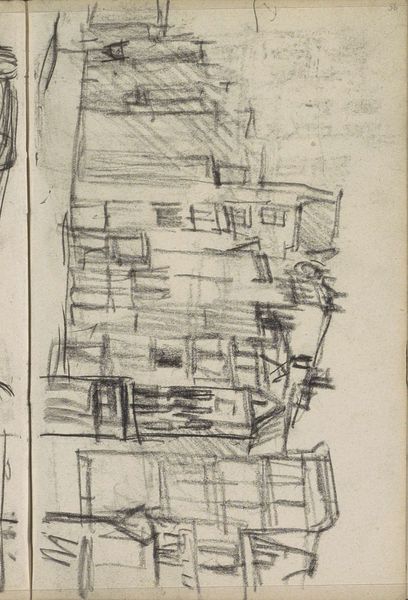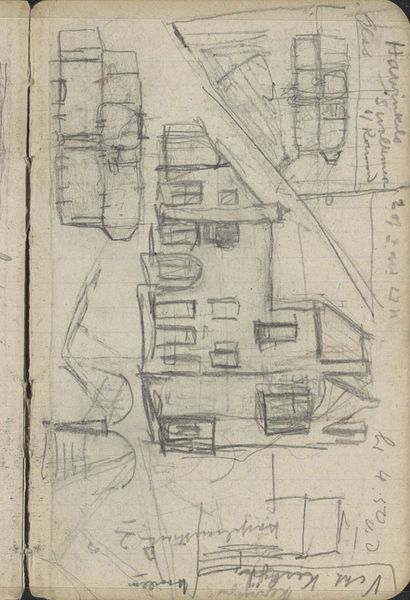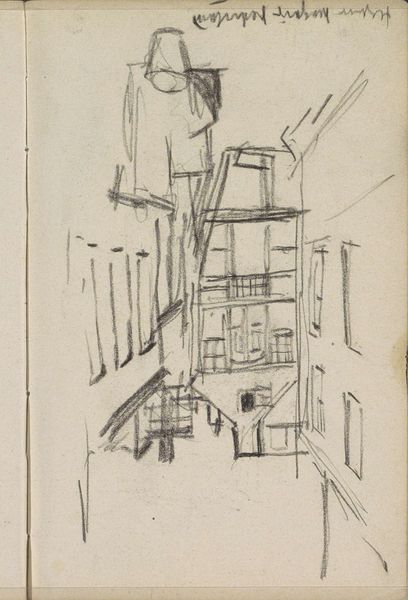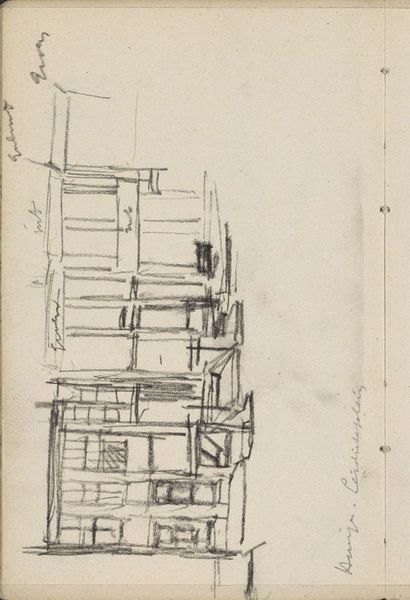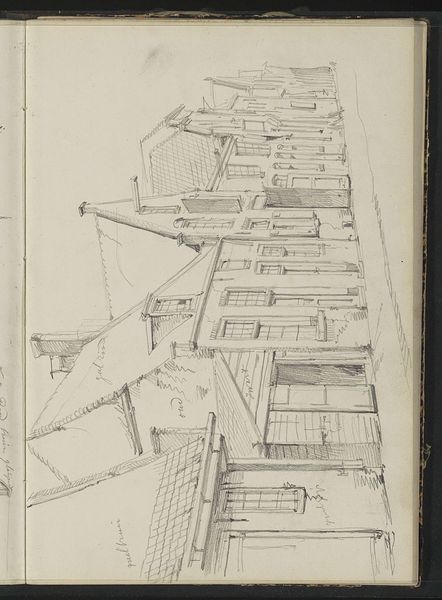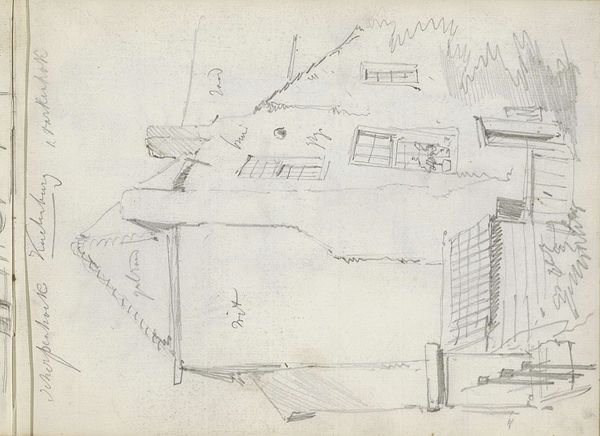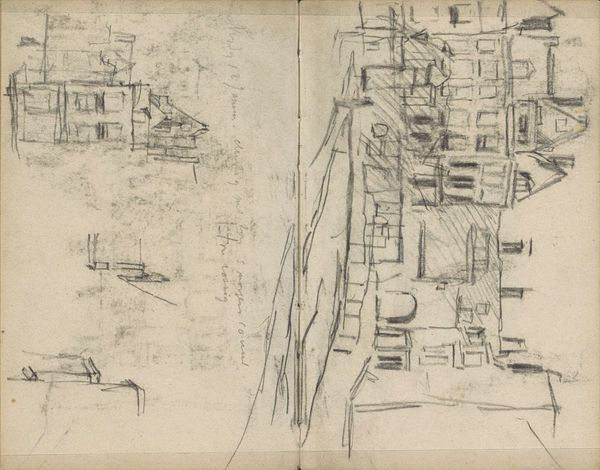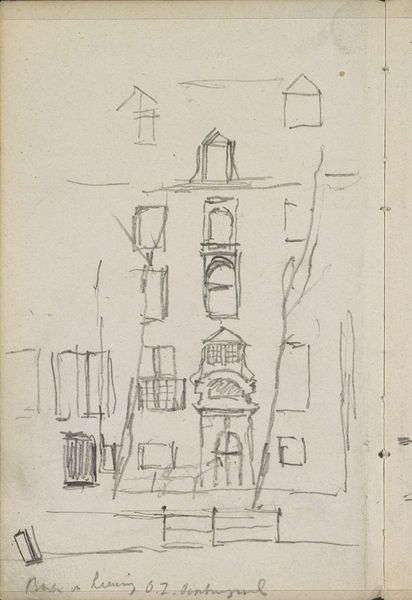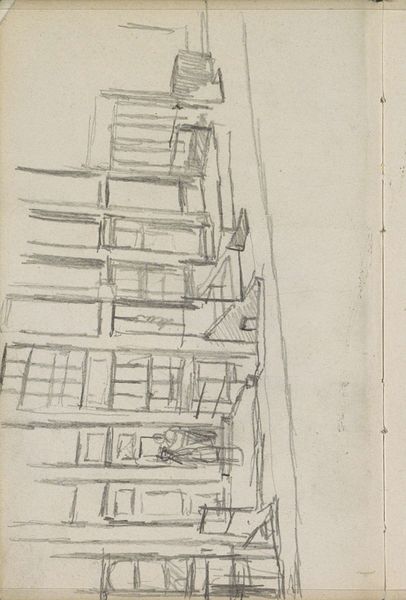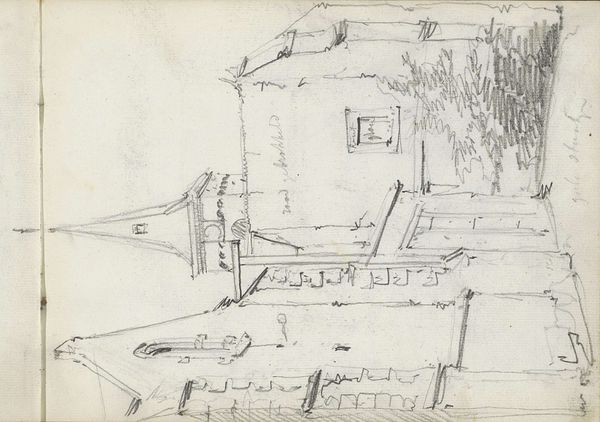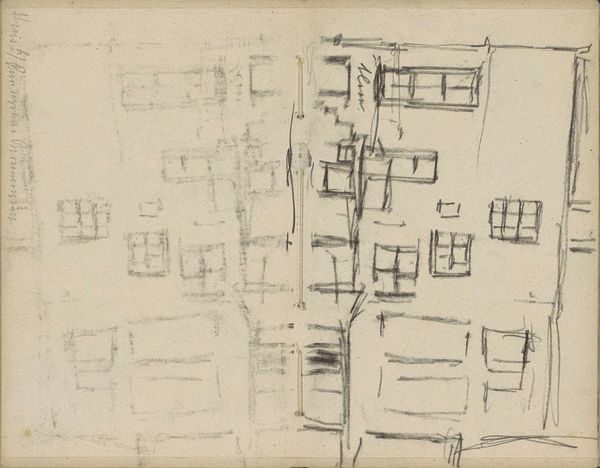
drawing, pencil
#
drawing
#
pencil
#
cityscape
#
realism
Copyright: Rijks Museum: Open Domain
Curator: Here we have "Pand met een trap voor de ingang" – translated as "Warehouse with a staircase at the entrance" – a pencil drawing created between 1849 and 1895, courtesy of Willem Koekkoek. It is held in the Rijksmuseum collection. Editor: It’s so skeletal! The bare bones of a building, presented in very delicate lines. It has an almost dreamlike quality. Curator: Indeed. The realism in Koekkoek’s cityscape often romanticizes historical architecture. It seems a world apart, but let’s examine it through the lens of its public role, even in sketched form. Think about the societal values embedded within urban structures. Editor: Right away, the visible staircase and the arrangement of the windows and perhaps loading doors point towards ideas of access, or in some ways restriction, depending on one’s role in the marketplace of the time. Who had access and to what portions of the structure speak of commerce, no? Curator: Absolutely. The composition and its perspective subtly address social hierarchy. We see these merchants, traders and artisans inhabiting a certain physical space and it defined so much of their social possibilities. The details, even in a quick study like this, reveal assumptions about the inhabitants' position and privileges. Editor: I wonder about Koekkoek’s own position when creating this. The fact that he focuses on this commercial building and the almost fragile rendition raises questions around whose stories were being told through art. Is this intended to uplift a rising merchant class or more about recording changes? Curator: It is likely both. We need to recognize his work as active in the sociopolitical dynamics of mid-19th century. The “realism” aesthetic itself served particular audiences and ideals. He chose these scenes carefully and captured the rise of this group. Editor: Even now, this seemingly straightforward cityscape acts as a layered statement. These skeletal outlines offer a chance to fill in the context ourselves and reflect on what has been. Curator: A poignant point. By showing a small snapshot, we come away reminded to look at architecture to discern not only building, but lives that came before, too.
Comments
No comments
Be the first to comment and join the conversation on the ultimate creative platform.
